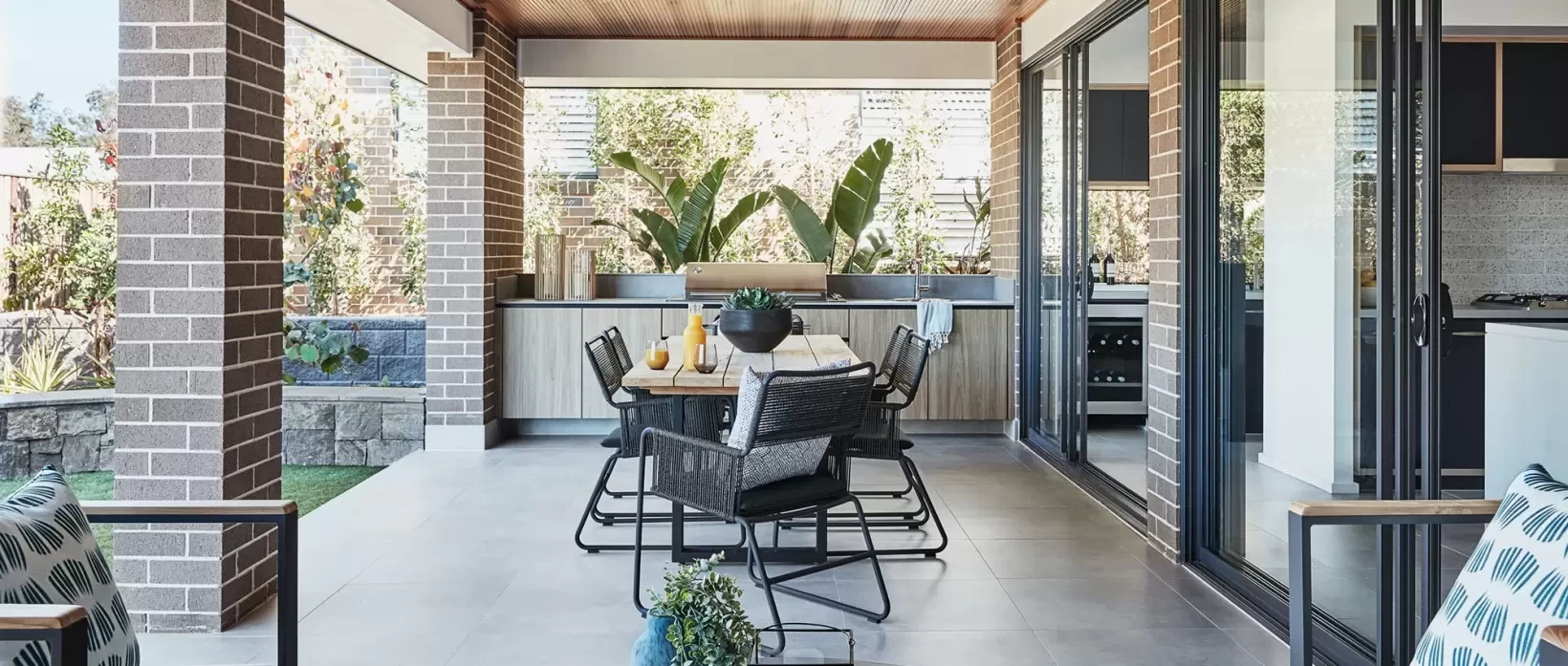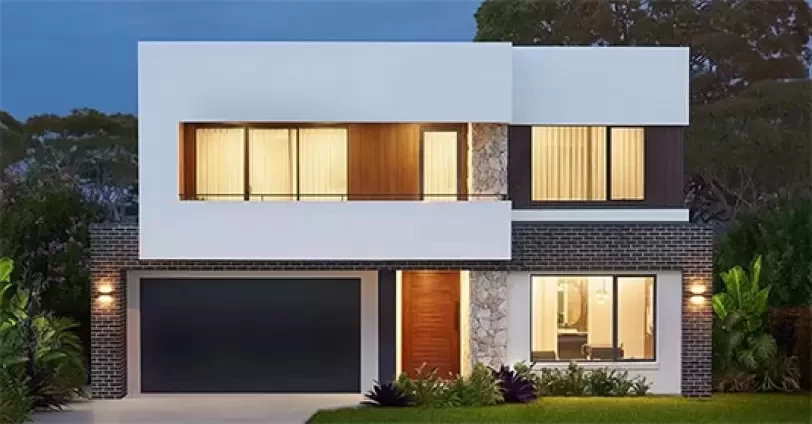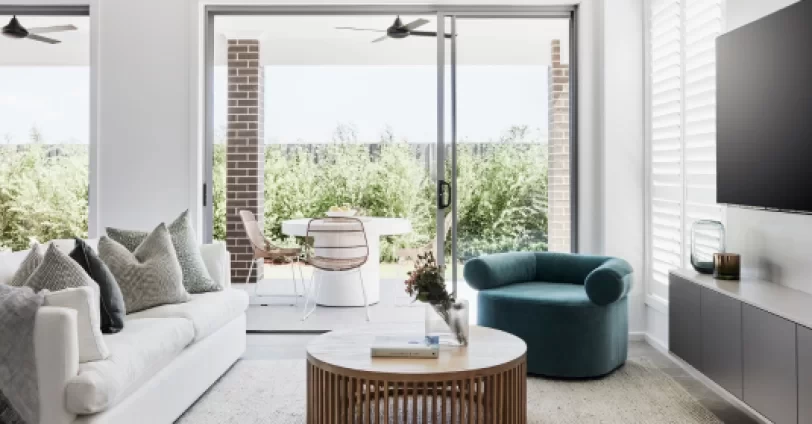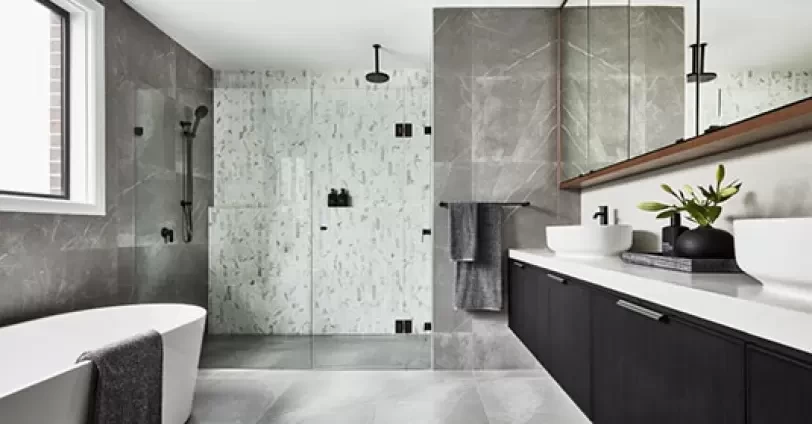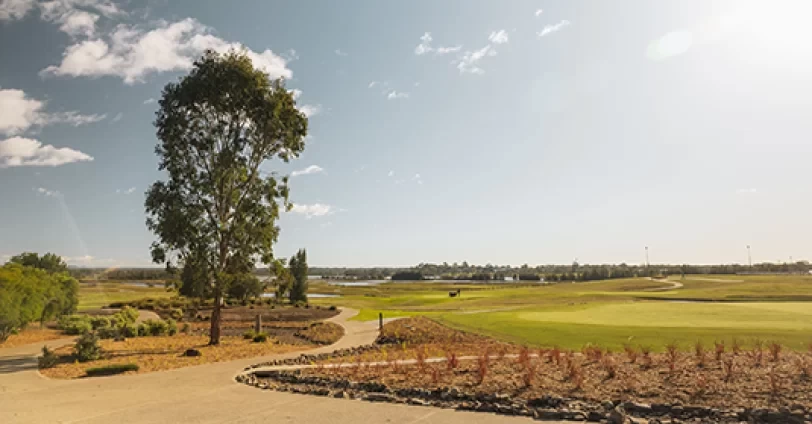As Australians, we’re very aware of the amazing climate we enjoy.
Unlike our European and North American neighbours, our milder seasons often mean that for much of the year, we have the option of living outdoors.
For homeowners, that allows us to extend our living space into the backyard, effectively creating an outdoor room for relaxing, dining and entertaining. With Summer in full swing, it’s the perfect time to consider how to create a functional and fabulous outdoor room that will work for the whole family.
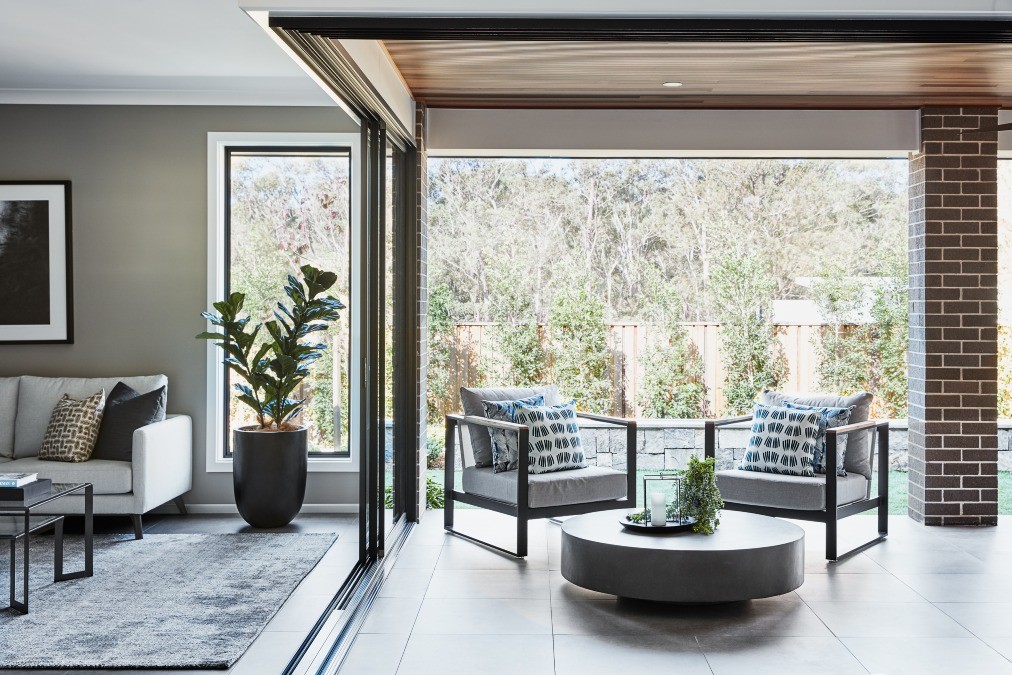
Outside the Square
For it to be as inviting as possible, it’s worth looking at it like any other room in the house, with attention to flooring, furniture, lighting and even walls.
Senior designer at Coco Republic, Joy Simonsen, says outdoor furniture has come a long way in recent years, with technology starting to catch up with design. Outdoor fabrics with UV resistance look and feel similar to those used indoors, opening up design possibilities and raising the bar in comfort and style.
She says the first thing to decide, as you would indoors, is what you plan on using your outdoor space for.
“We always go with function first,” she says. “What do you want to use it for? If it is a dining space with a barbecue, look at the size and scale and materiality of the furniture. Who will be using it? Will you need to stack the chairs and put them away later?”
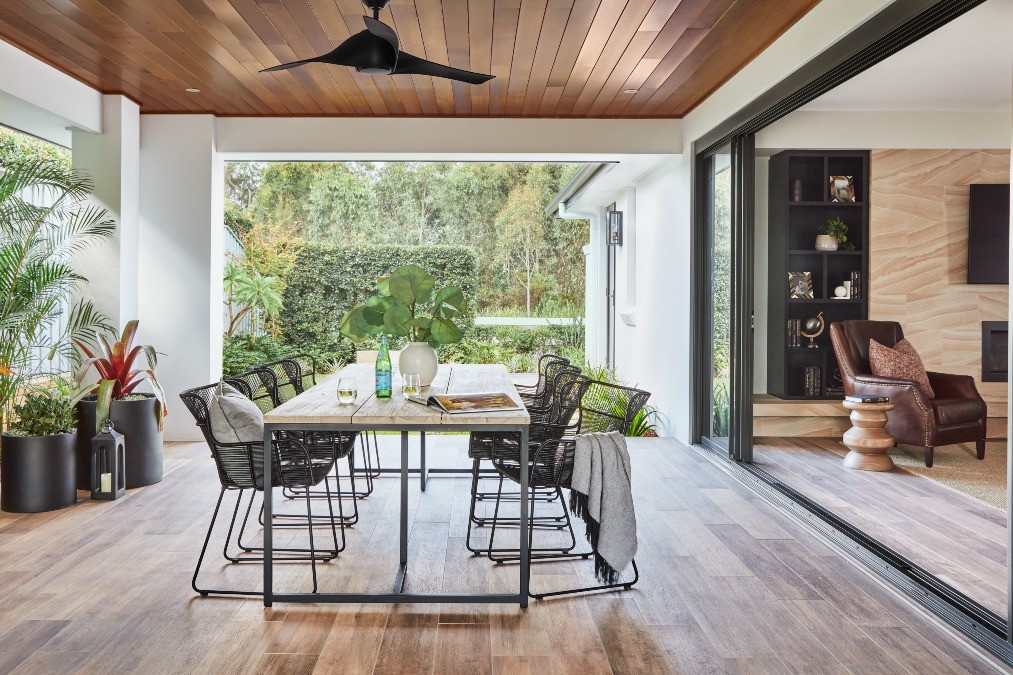
While hard wearing timbers like teak have been a popular option for outdoor furniture in the past, Joy says interest is growing in outdoor furniture that requires little maintenance but has clean lines and looks as good as new.
Coco Republic’s outdoor range of dining chairs, sofas and tables uses a mix of powder coated aluminium, woven rope, concrete and timber. Joy says such is their versatility and good looks, designers are using them inside, as well as outside.
“More people are buying outdoor furniture that is maintenance free,” she says. “They don’t want to recondition it every couple of years. That’s why powder coated materials and furniture with things like rope detailing are quite popular options.”
If the space is multipurpose, look for furniture that is lightweight and flexible so that it can be moved around and reconfigured, depending on your needs, where the sun is and how many people are using it.
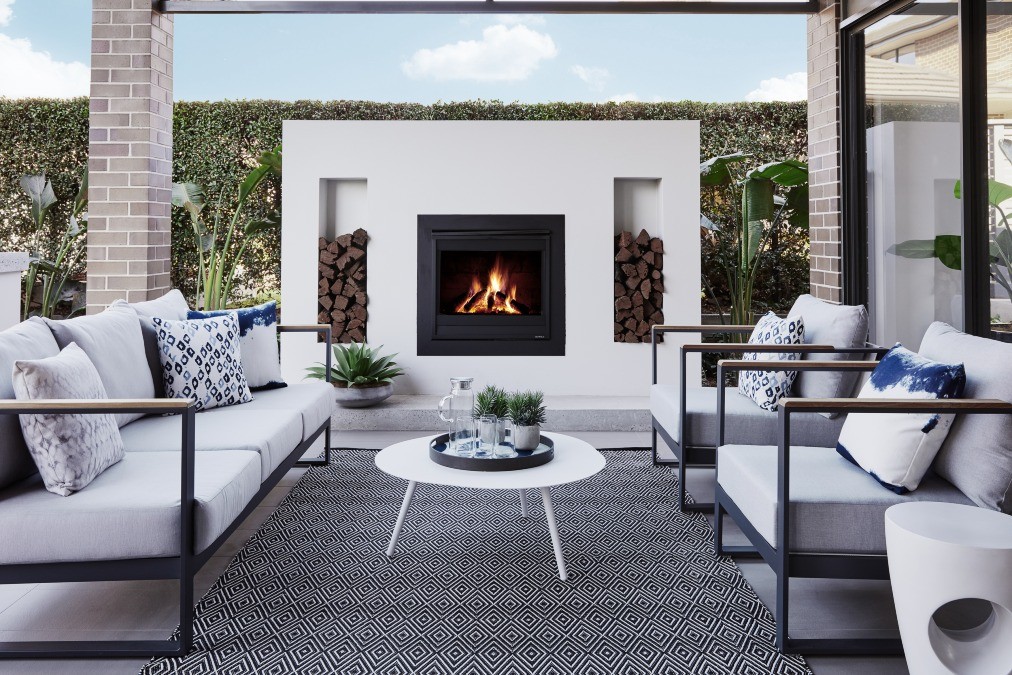
Floor show
When you’re planning indoor spaces, flooring is often one of the key decisions in the building process. If you’re working with a cement slab on a patio, tiles can have a transformative effect. But if your decking or paving is already in place, think about adding an outdoor rug made from polypropylene which will be mould and UV resistant, as well as waterproof. It can be a quick and easy way to inject colour and pattern into a plain area.
Just as they would indoors, Joy says rugs serve several uses in outdoor spaces.
“Sometimes the surfaces outside can be a bit hard and this provides some softness underfoot,” she says. “A rug will also bring the pieces of furniture together in a setting and if it gets grubby, you can hose it off.”
If in doubt, always go with the larger rug option, as long as it fits in your space, to ensure that at least the front legs of your lounge setting sit on it. This creates a visual connection between various pieces of furniture.
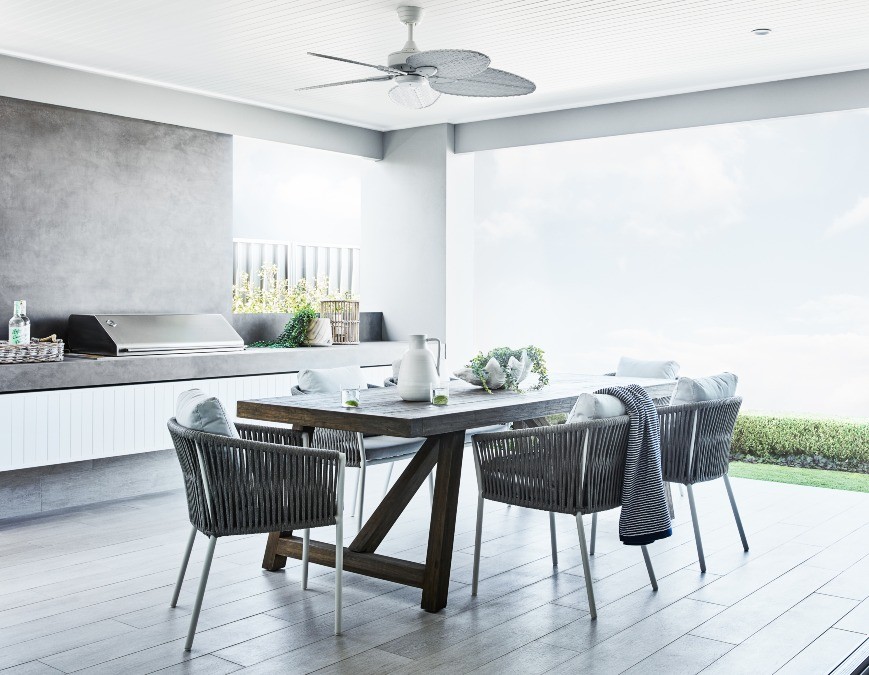
Raise the bar
To really create the sense of being in a room, you need to consider height. Often, lounge or dining chairs will all be at the same level. Just as you would add, say, a floor lamp to the living space, bringing in elements at different heights will draw the eye up. This is where groups of larger pots with taller plants such as palms, standard roses or small trees placed together along the edges can be useful. Keep it simple, putting pots of the same colour together in groups of three.
“Sometimes the space is so tiled, you don’t get that green element in an alfresco space and this is a great way to connect it to the garden,” says Joy.
If your ‘room’ is bordered by a masonry wall, or even the back of the house, you can add wall planters, or even plants like elkhorns, which normally attach themselves to tree trunks in the forest. Outdoor mirrors can also be a useful tool, reflecting a green part of the garden and visually extending your space. Just as you would do hanging artworks indoors, apply the same rule of thumb, keeping planters no higher than eye level.
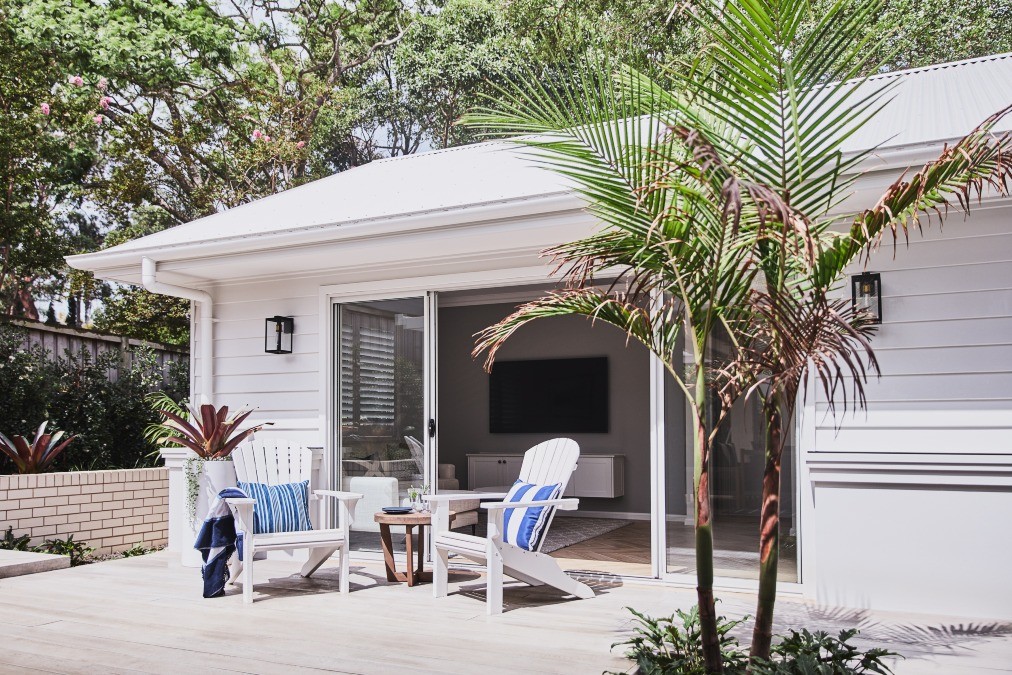
Into the night
If you want to make the most of your space and extend your use into the evening, lighting will be a key element. Just as a basic pendant light indoors can leave a room feeling less than atmospheric, outdoor lighting needs to be about more than security.
Spotlighting a beautiful plant, a water feature or even a textured piece of timber can create beautiful accents, but it can be as simple as draping fairy lights or festoon lights across a pergola, a nearby tree or covered alfresco. Use portable lanterns or hurricane lights on corner tables to softly illuminate the outer edges of your space while creating a sense of intimacy among guests.
When in doubt, a well-placed firepit makes for a great focal point after dark.
Accessorise, accessorise, accessorise
Finally, Joy says, you shouldn’t forget about accessories to add texture, colour and a little bit of comfort.
“You can have a bit of fun and be creative by adding a couple of quirky armchairs and mixing and matching,” she says. “Sometimes outdoor furniture can be a bit bland so scatter cushions in decorative fabrics are a great choice.
“Bringing the colours you’ve used inside to your outdoor space is a great way to link the two.”
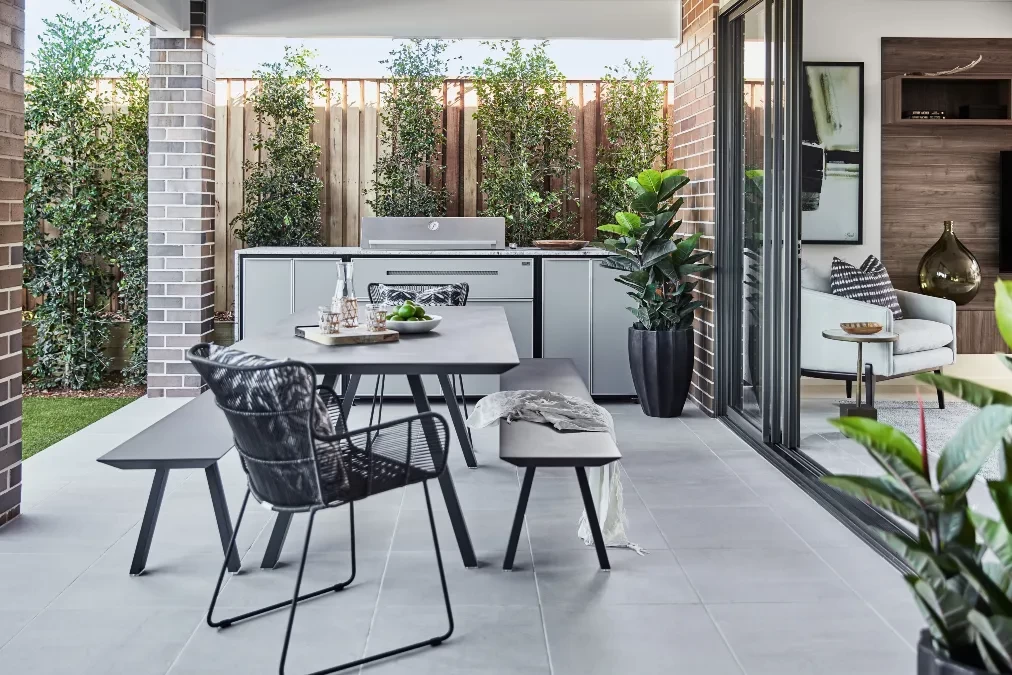
Discover our Display Home and Speak to our Experts
Visiting one of our Display Homes, is the best way to start your home-building journey, regardless of whether you are looking to build a new home, or planning a knock-down rebuild of your existing home.
However, if you’re further afield, we have Sales Consultants located in all of our Display Homes and Sales Offices, from the South Coast to Newcastle, that can provide you with expert advice.
If your not quite ready to visit us in person you can take a virtual tour of our Display Homes or to make an enquiry call us on 13 63 93.
